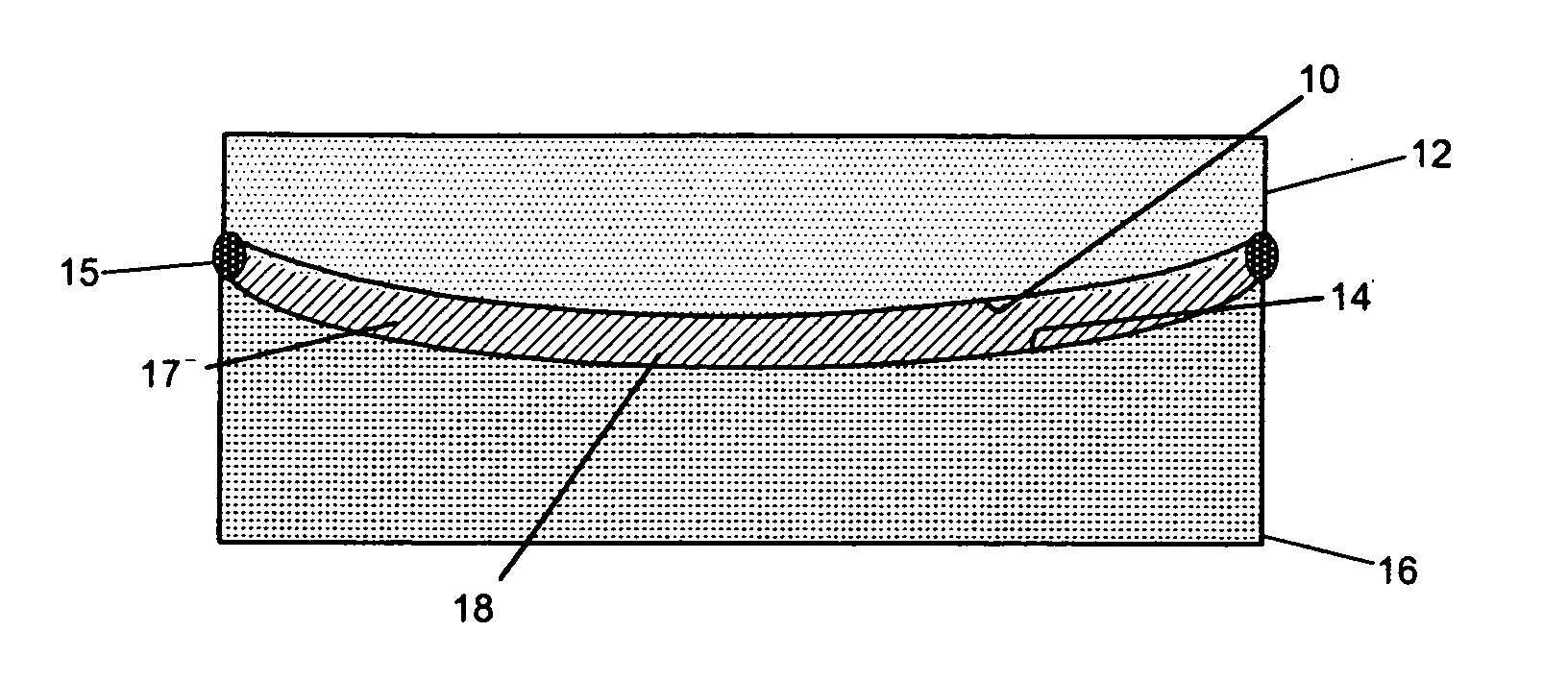Alignment facilities for optical dyes
a technology of alignment facilities and optical dyes, applied in the direction of instruments, polarising elements, liquid/solution decomposition chemical coatings, etc., can solve the problem of not being able to achieve full alignmen
- Summary
- Abstract
- Description
- Claims
- Application Information
AI Technical Summary
Benefits of technology
Problems solved by technology
Method used
Image
Examples
example 1
[0128] Part A
[0129] Two coating compositions (indicated as Coating Composition 1 and Coating Composition 2 in Table I) were formed by adding the materials listed in Table I in the order listed to a beaker with stirring:
TABLE ICoating CompositionAmount in gramsCoating Composition 1:RM 82(1)0.5RM 105(2)0.5RM 257(3)0.5RM 23(4)0.5Anisole1.3BYK ®-346 additive(5)0.01Irgacure ® 819(6)0.10Coating Composition 2:RM 820.5RM 1050.5RM 2570.5RM 230.5Licristal ® E-7(8)0.2Anisole1.1BYK ®-346 additive0.01Irgacure ® 8190.10
(1)RM 82 is a liquid crystal monomer (LCM) available from EMD Chemicals, Inc and is reported to have the molecular formula of C39H44O10.
(2)RM 105 is a liquid crystal monomer (LCM) available from EMD Chemicals, Inc and is reported to have the molecular formula of C23H26O6.
(3)RM 257 is a liquid crystal monomer (LCM) available from EMD Chemicals, Inc and is reported to have the molecular formula of C33H32O10
(4)RM 23 is a liquid crystal monomer (LCM) available from EMD Chemicals,...
example 2
[0142] Coatings of Coating 1 or 2 were formed on the remaining four (4) substrates prepared above in Part C using the coating parameters set forth in Table III.
TABLE IIICoatingSpinTime forCompositionRateSpin TimeAlignmentSample No.No.(rpm)(seconds)(minutes)112003002521200300223220030054(A)18007524(B)13003005
[0143] Sample 4 represents a single substrate to which a first coating (A) was applied and aligned as indicated above in Table III to form Sample 4(A). Thereafter, an additional coating (B) was applied on the first coating (A) and aligned as indicated in Table III to form Sample 4(B). Thus, Sample 4B had two coating applied thereon.
[0144] After application of the coating, the time for at least partial alignment to occur was determined as previously described. Thereafter, the coatings were further cured by covering the coated substrate with a cut-off filter (to screen out the ultraviolet wavelengths less than 390 nanometers) so that the cut-off filter was about 1 mm above the s...
example 3
[0146] The samples prepared in Example 2 were further analyzed to rate the degree of alignment and the thickness of the coatings as follows. The degree of alignment for each of two regions “a” and “b” on each of the samples was determined in a qualitative manner using the technique for checking the alignment (previously described) and assigned the rating of “good”, “poor” or “very poor”.
[0147] The thickness of each of regions “a” and “b” were determined as follows. For each sample, a cross-section about 100 microns in thickness was taken in each region “a” and “b” with a diamond wet saw. Each cross-section was immersed in liquid having a refractive index of 1.498 an examined with a polarizing microscope equipped with a digital camera. Photomicrographs of the cross-sections were made with a Diagnostic Instruments Model 3.2.0 digital camera and the thickness of the coating on the substrate was determined using Spot software, version 3.5.6.2. Upon immersion in the refractive index liq...
PUM
| Property | Measurement | Unit |
|---|---|---|
| thickness | aaaaa | aaaaa |
| thickness | aaaaa | aaaaa |
| thickness | aaaaa | aaaaa |
Abstract
Description
Claims
Application Information
 Login to View More
Login to View More - R&D
- Intellectual Property
- Life Sciences
- Materials
- Tech Scout
- Unparalleled Data Quality
- Higher Quality Content
- 60% Fewer Hallucinations
Browse by: Latest US Patents, China's latest patents, Technical Efficacy Thesaurus, Application Domain, Technology Topic, Popular Technical Reports.
© 2025 PatSnap. All rights reserved.Legal|Privacy policy|Modern Slavery Act Transparency Statement|Sitemap|About US| Contact US: help@patsnap.com


